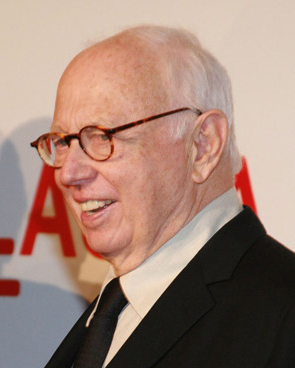Ellsworth Kelly

Renowned artist Ellsworth Kelly was born in Newburgh, New York, in 1923. His academic studies, interrupted by his military service in the last two years of World War II, took him from Pratt Institute in Boston to the School of the Museum of Fine Arts in Boston, and then onto Paris, where he studied at the École des beaux-arts thanks to the GI Bill. He discovered Romanesque art and architecture, Byzantine art, Surrealism, and Neo-Plasticism, the latter influencing his experimentation with automatic drawing and geometric abstraction and setting a course for his lifelong interest in these practices, along with his use of bright colors and hard edges, in his flatly painted canvases, panels, and sculptures.
His first solo show was held at the Galerie Arnaud Lefebvre in Paris in 1951. A few years later, he returned to the United States, settling in New York City. His first solo show in the city was held at the Betty Parsons Gallery in 1956. The Museum of Modern Art included his work in its 1959 exhibit, 16 Americans. In 1973, the same museum mounted Kelly’s first retrospective. His work has been exhibited in major museums in the United States and Canada, including the Whitney Museum of American Art, Guggenheim Museum, Metropolitan Museum of Art, Fogg Art Museum in Cambridge, Massachusetts, San Francisco Museum of Modern Art, and Philadelphia Museum of Art.
His public commissions have included a mural for UNESCO in Paris, a sculpture for the city of Barcelona, and a memorial for the United States Holocaust Memorial Museum in D.C.
Moving out of Manhattan in 1970, he created a studio in Chatham and a home in nearby Spencertown, both in upstate New York. He lived and worked there until his death in 2015.